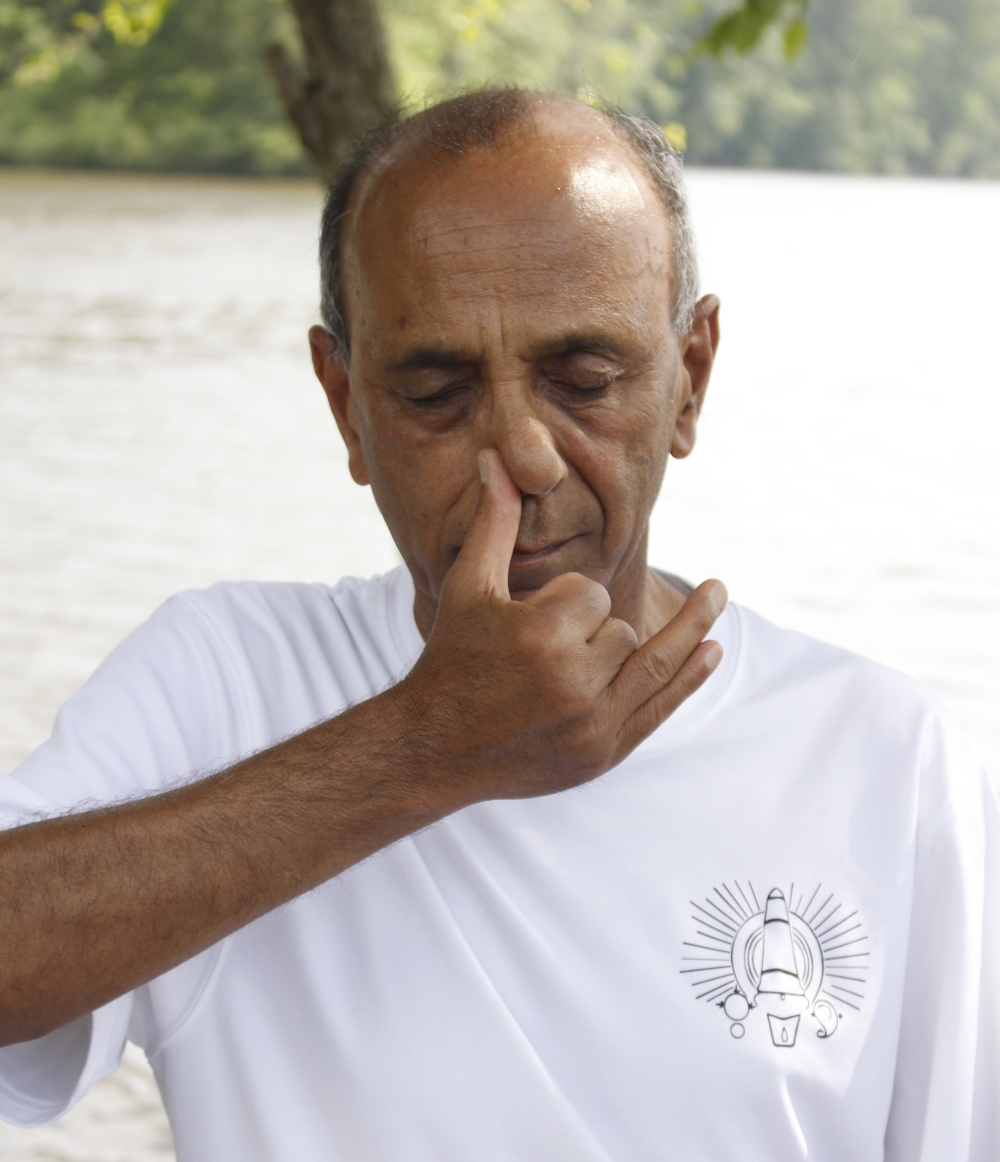How emotions impact breathing
We are all familiar with instances when our emotions can control the breathing rhythm. For example, when we are very angry or agitated, our breathing is very uneven, fast and shallow. When we are very sad, we breathe uneven, sobbing breaths. When we are calm or engrossed in some pleasant activity, like listening to some soulful music, our breathing is very gentle, even and soft. When we are trying to thread a needle, we naturally suspend our breathing as we attempt to move the thread through the hole. These examples demonstrate that our breathing pattern is a good indicator of the state of the mind that we are experiencing at a given time.
From the perspective of yoga, the reverse of the above situation is not only true but highly desirable. Which is to say that by controlling our breathing pattern, we can potentially control our emotions. All of us, at one point of time or another, are overtaken by negative emotions like anger, jealousy, hatred, greed etc. There are other times when we experience positive emotions like love, compassion, tenderness etc.
When we are physically hurt, or have some physiological ailment, we can go to a doctor and get some treatment. Medical science has progressed enough that it can now treat some of the very serious diseases which, only a few decades ago, were considered untreatable. However, when we look at some of these emotional problems like anger etc, there is no known treatment that a medical doctor can provide. At best, these problems are categorized as neurotic or psychotic and you may be advised to go to a psychiatrist or a ‘shrink’ for treatment. How successful these treatments are is highly debatable.
Rhythms of the universe
Everything in the universe has a natural rhythm of its own. The sun, moon and all the stars have a rhythm. The earth rotates around the sun and around its own axis in a fixed rhythm. Day and night have a rhythm; ocean waves ebb and flow in a rhythm. Within our body, our heart beat, blood circulation, breathing, flow of all fluids, all have a rhythm. As per principles of physics, all matter is nothing but vibrations – atoms and molecules vibrating at various frequencies. Consider water (H20) for example. Its molecular structure doesn’t change whether it is in the form of ice, water or vapor; the only change is in the vibration frequency of the molecules with resulting change in its state.
Mind and emotions
When we go deeper into our mind, every thought, emotion and feeling has a natural rhythm of their own. For example, the emotions of love and anger represent two different vibrations. In addition to the vibrations, every emotion or feeling is also represented by a certain configuration of neurons in our brain. As we know, there are billions of neurons in our brain. They are all interconnected in a huge mesh of networks. Each thought, feeling and emotion is represented by a certain configuration of these neurons. Depending upon the trigger, one of these network configurations gets activated which vibrates at its own natural frequency giving rise to a specific emotion (anger, for example).
Rhythms of āsana and prāṇāyāma
Let us now turn our attention to the practice of yoga and see how yoga might help in dealing with these emotions. At the physical level, the practice of asana (physical postures) involves moving/stretching the body in a rhythmic manner, synchronizing the movement with our breathing pattern. When we practice pranayama, all breathing practices involve rhythmic breathing. According to Yoga Sutras of Patanjali, pranayama involves three variables – ‘desha’ (location), ‘kala’ (duration) and ‘samkhya’ (count). In addition, the breathing can be subtle and gentle or brisk and forced. Based on these variables, a very large number of breathing techniques have evolved. Most of the techniques practiced today are taken from the Hatha Yoga Pradipika, an authoritative text on Hatha Yoga.
Principle of resonance
During the pranayama practice, when we are breathing rhythmically, it is likely that the frequency of vibration might match one of the natural rhythms of an emotion (anger, for example). There is a principle in physics according to which when two waves of similar frequency collide with each other, their force can get magnified many times. It is well known in military circles that soldiers marching in step over a bridge can cause harmonic oscillations which can make the bridge collapse. That is why the soldiers are asked to break step while crossing a bridge. Attached is an image of a plaque at the Albert Bridge in London which conveys this message.
How parnayama helps
Something similar happens with our emotions when their frequency matches the rhythm of the breathing pattern. In this case, even a hidden emotion can come up to the surface making it easier for us to deal with it. Likewise, it is equally likely that the neuron configuration for a given emotion might get disturbed to an extent that the force of the emotion gets weakened. With practice, these emotions can eventually be brought under control quite effectively.
I have attempted to give a somewhat scientific explanation of how the practice of yoga involving rhythmic breathing patterns can positively influence our patterns of emotions. When our emotions are under check, we can perform all our actions more objectively since we are not stressed out due to negative emotions. This will lead to a happier and more fulfilling life.
I hope you will find the above useful and convincing enough that it will motivate you to practice yoga (pranayama, in particular) on a regular basis. I would love to receive your feedback. Please leave a comment in the comment box and send it in.


Good Morning, Subhash,
Thank you for writing this article. It is very helpful and informative. I introduced a little vibration and resonance in class yesterday and had some interest in the theory. I am so glad to have found this to help me with understanding and explaining it more to students.
Hope that you are doing well and having a wonderful spring. Sincerely, Brenda
Great to hear from you, Brenda. Glad you found the article helpful. Hope your classes are going well.
From 2year back having listening problem ,having lot of whistling both ear,I m going to depression from this, dr said bone enlarge in ear ,advise for operation ,but I m diabetic n thyroid problem also , i m afrId for operation , please some give natural advise for recovery
Hi Seema, sorry to hear of your health issues. I suggest practicing yoga – asana, pranayama and meditation on a regular basis. There is no guarantee that yoga will cure you fully. However, practicing yoga will teach you how to deal with the situation and what the best approach is.
Is it benefit for cure ear blockage or any hearing problem recover.